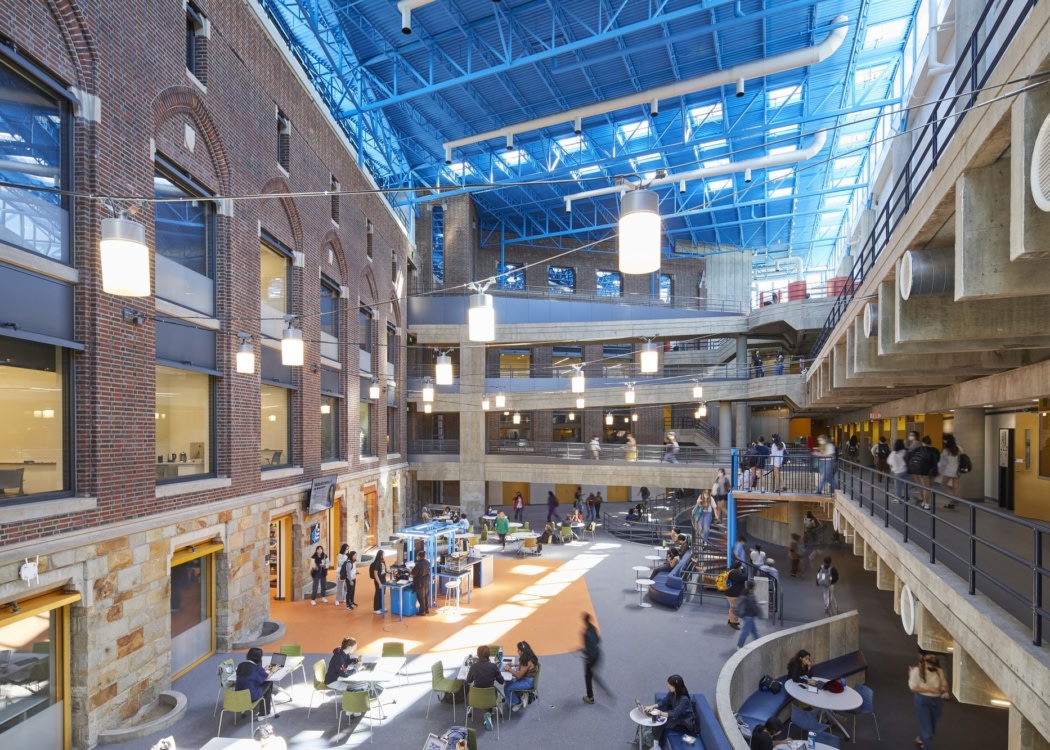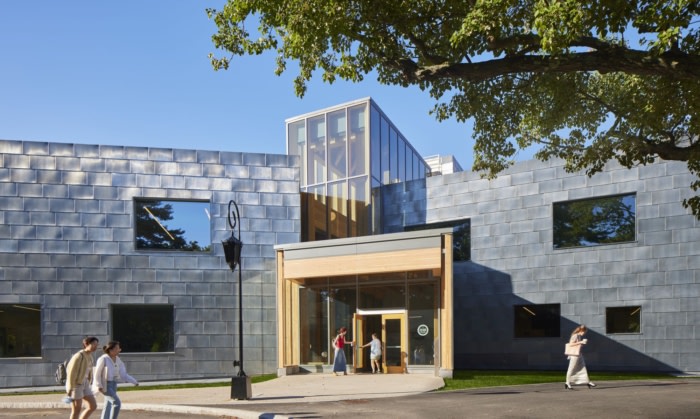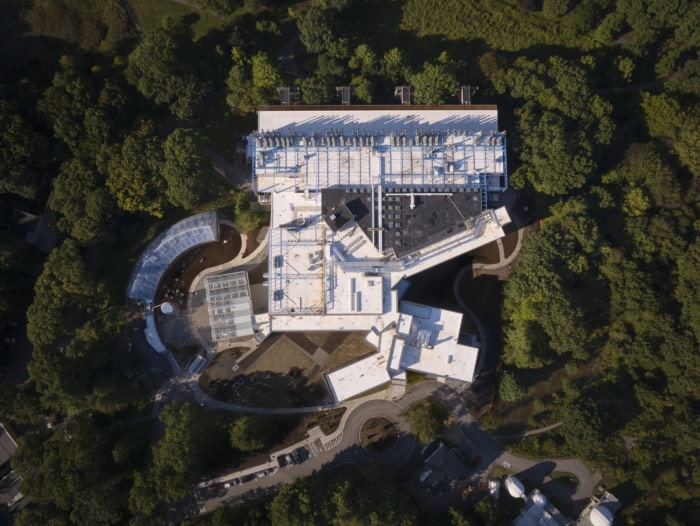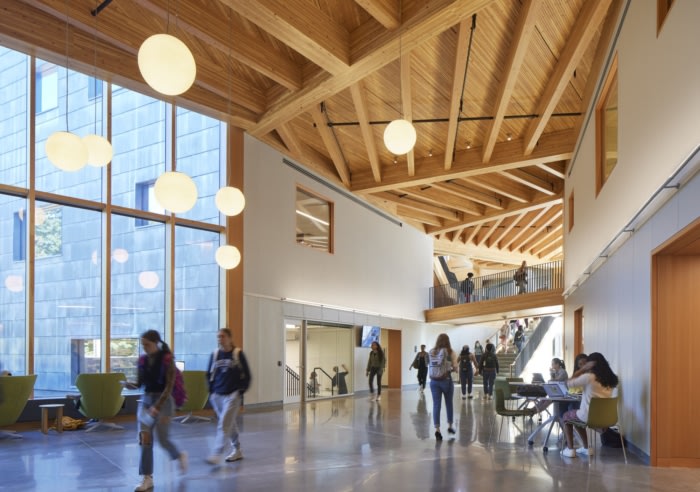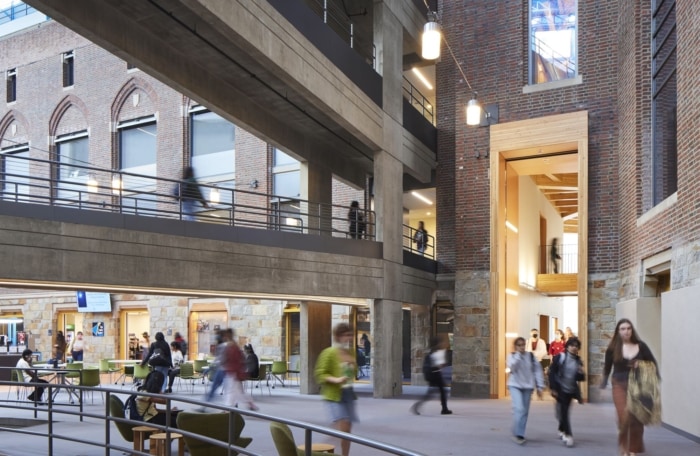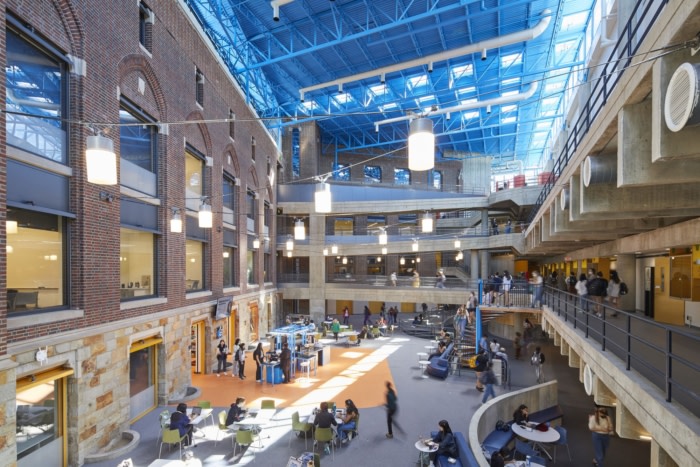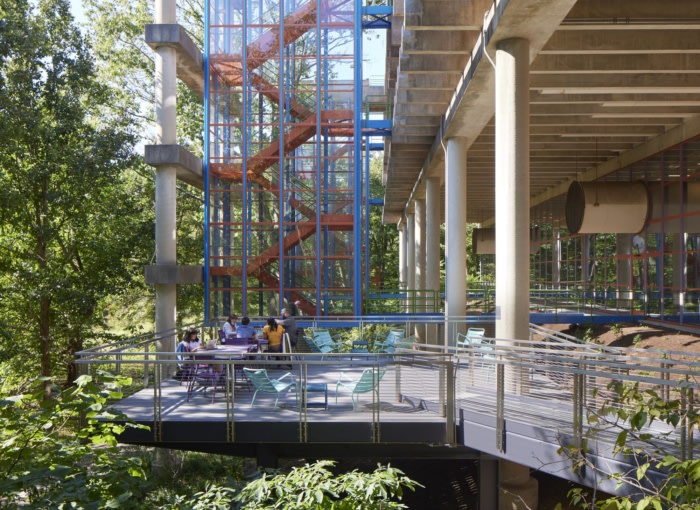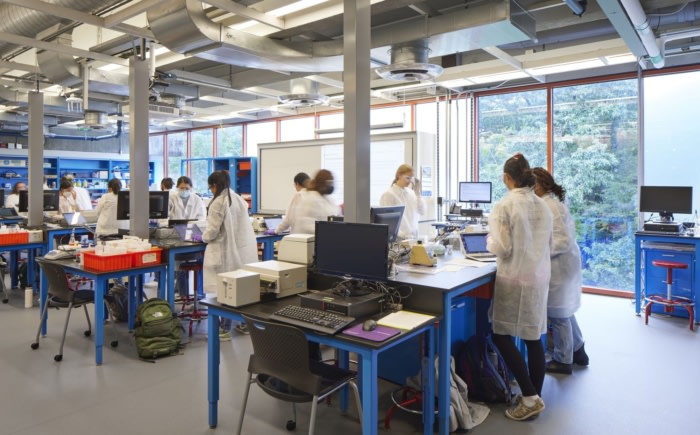Wellesley College Science Complex
Skidmore, Owings & Merrill (SOM) transformed Wellesley College’s outdated science center into an integrated complex with state-of-the-art facilities and a sustainable “living laboratory” village for science programs.
SOM helped Wellesley College achieve the most ambitious building project in its modern history: transforming an outdated science center into an inviting, integrated, and flexible complex. With state-of-the-art teaching and research facilities, the restoration of the surrounding landscape, and a strategy to preserve and renovate the center’s most distinctive elements, the new Science Complex positions Wellesley to continue advancing its leadership in STEM education for women.
Situated on a historic campus designed by Frederick Law Olmsted, Jr., the existing science center was constructed in the 1920s and expanded in the 1970s and 1990s to accommodate new research programs. The original buildings reflected a mix of architectural styles, merging a collegiate Gothic brick structure with a modernist addition due for substantial renovation.
SOM conducted a thorough analysis of the complex to determine how to reconcile these disparate buildings, while maximizing one of the college’s most cherished assets—its historic landscape. Through phases of removal, renovation, and addition, the plan modernizes existing infrastructure, while creating new spaces to sustain Wellesley’s position at the forefront of science education.
Distinguished by low ceilings and small classrooms, the 1920s building was ultimately replaced with an addition conceived as a series of pavilions. The structure orients the pavilions around a central spine known as the Chao Foundation Innovation Hub to compose a multi-story cascade of mass timber spaces lined with breakout areas. Windows reveal the landscape outside as well as the labs indoors—putting the research on display and establishing a “village” for science.
The 1970s building, the L-Wing, underwent a complete renovation that replaced the entire envelope with durable, high-performing materials and yielded the installation of a new, suspended terrace among the treetops. With its expansive laboratory spaces and exposed concrete structure and mechanical systems, the L-Wing boldly contrasts with the more traditional architectural styles of the Wellesley campus.
This contrast is heightened in the building’s signature space, called the Focus: a multi-story atrium that was created by enclosing the space between the L-Wing and the neighboring Sage Hall. The neo-Gothic brick facade of Sage Hall serves as one wall within this modernist atrium, highlighting an interplay between old and new.
The design concept envisions the Science Complex as a “living laboratory,” with strong connections to the surrounding landscape. The project knits all of Wellesley’s Science Hill together, linking the Science Complex, the Whitin Observatory, the Global Flora Conservatory, the arboretum, and the botanic gardens—thus creating the village of science programs. The design opens up the previously fortress-like buildings to the outdoors, and also introduces two new gardens used for scientific and ecological pedagogy.
The project significantly improves the Science Complex’s sustainability performance, and plays a key role in the college’s goal to achieve carbon neutrality by 2040. Before the renovation and expansion began, the buildings consumed more energy than any other place on campus. Now, the complex—which received LEED Platinum certification—is among the most environmentally efficient.
Design: Skidmore, Owings & Merrill (SOM)
Contractor: Turner Construction
Photography: Dave Burk, © SOM

